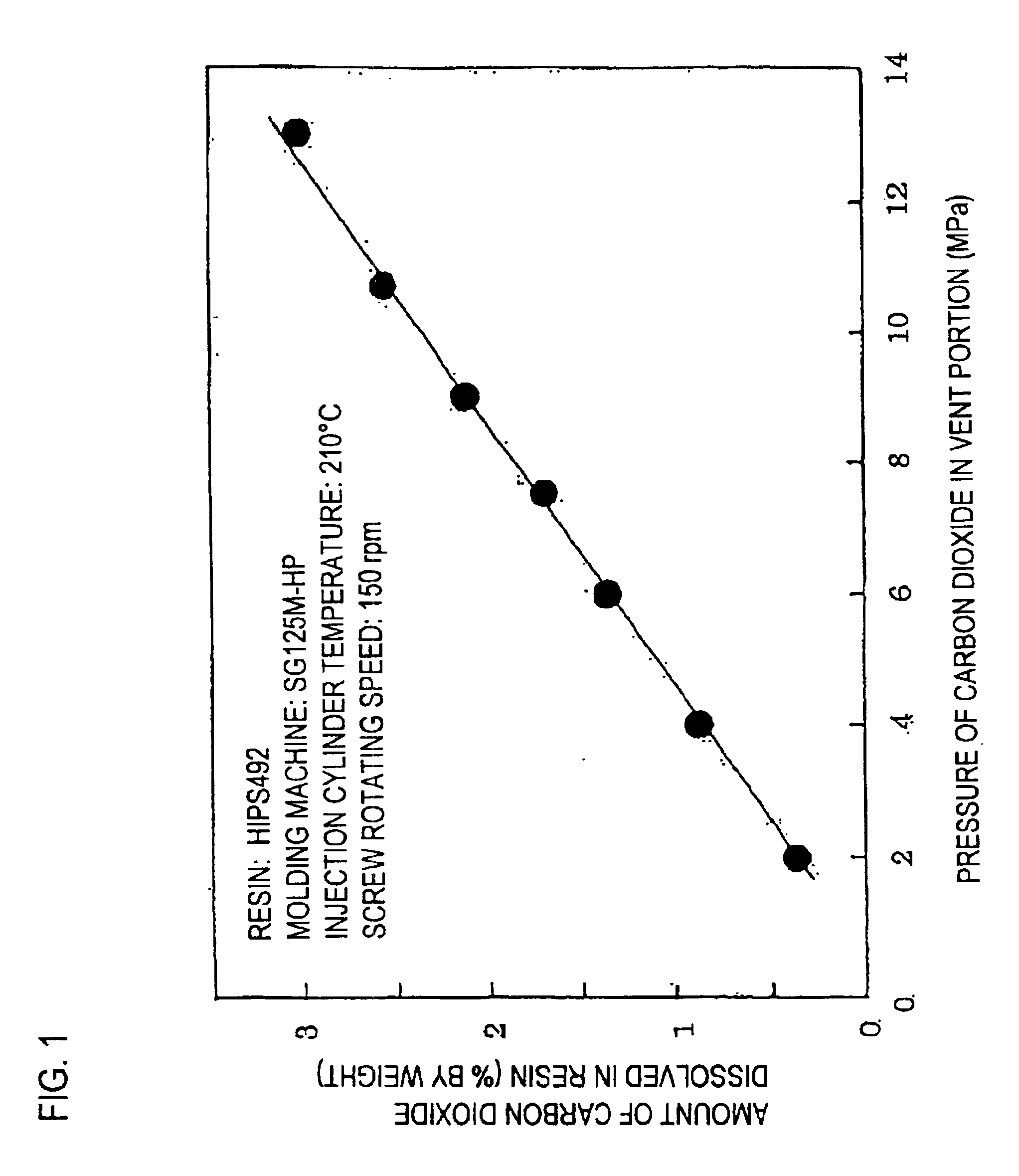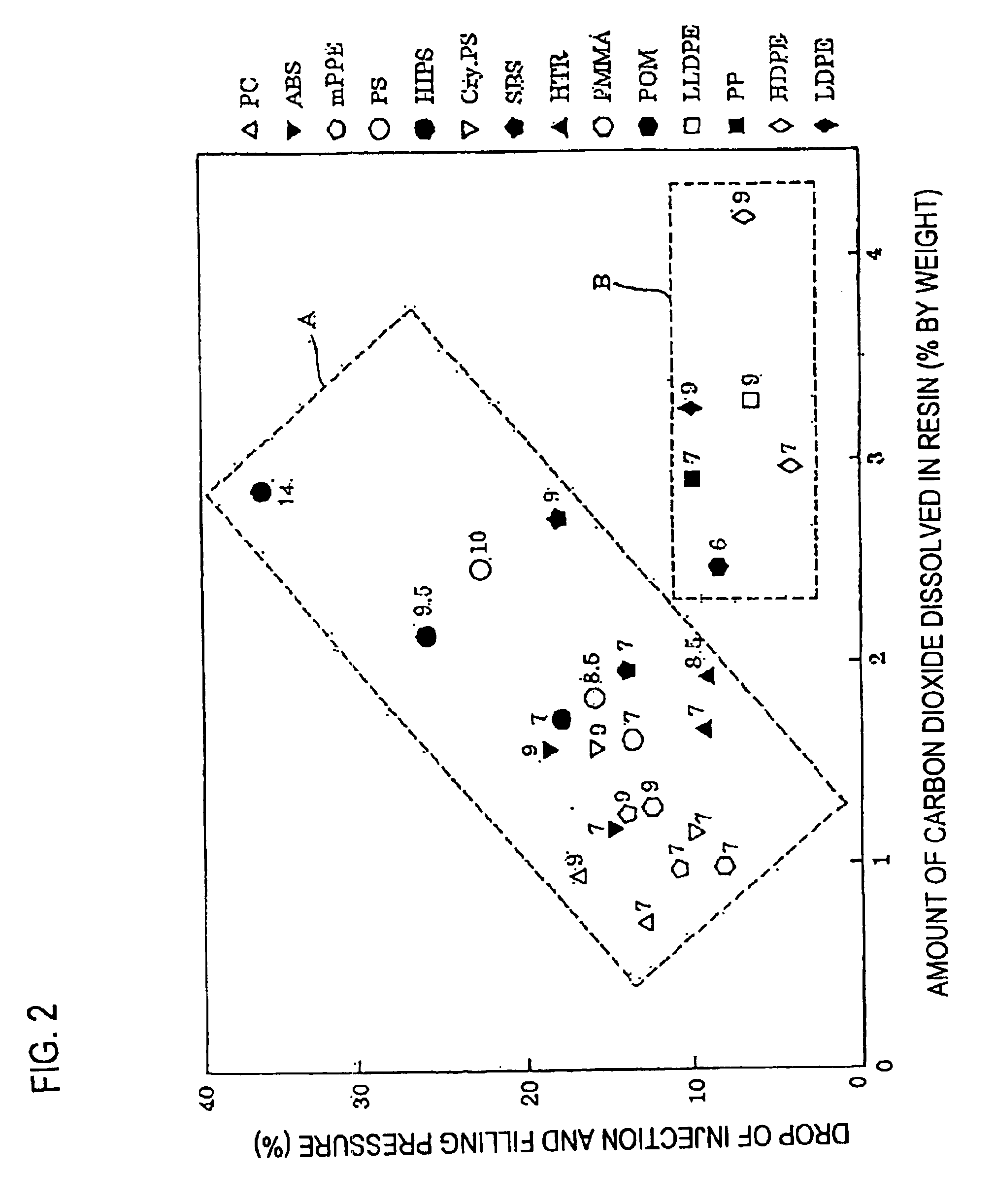Method of injection molding of thermoplastic resin
- Summary
- Abstract
- Description
- Claims
- Application Information
AI Technical Summary
Benefits of technology
Problems solved by technology
Method used
Image
Examples
example 1
[0103]The polycarbonate as a resin feed was plasticized in the plasticizing cylinder as it was supplied with carbon dioxide, whereby carbon dioxide was dissolved in the molten resin.
[0104]For this molten resin, the resin pressure within the plasticizing cylinder that was necessary for resin filling was measured at a mold surface temperature of 80° C. Given a filling time of 0.6 seconds, the required filling pressure was 220 MPa. The resin filling was followed by 3-second dwelling at a pressure of 190 MPa within the plasticizing cylinder and, after 20-second cooling, the molded article was removed and examined with the naked eye.
[0105]The molded article had swirl marks on the surface but no sink marks were found on the side opposite the rib, nor was found any warpage. A cross section of the molded article was also examined and no bubbles were found.
example 2
[0106]As in Example 1, the resin pressure within the plasticizing cylinder that was necessary for resin filling was measured for the rubber-reinforced polystyrene at a mold surface temperature of 40° C.; the required filling pressure was 150 MPa. The resin filling was followed by 3-second dwelling at a pressure of 120 MPa within the plasticizing cylinder and, after 20-second cooling, the molded article was removed and examined with the naked eye.
[0107]The molded article had swirl marks on the surface but no sink marks were found on the side opposite the rib, nor was found any warpage. A cross-sectional examination showed no presence of bubbles.
example 3
[0108]As in Example 1, the resin pressure within the plasticizing cylinder that was necessary for resin filling was measured for the modified poly(phenylene ether) resin at a mold surface temperature of 90° C.; the required filling pressure was 210 MPa. The resin filling was followed by 3-second dwelling at a pressure of 180 MPa within the plasticizing cylinder and, after 20-second cooling, the molded article was removed and examined with the naked eye.
[0109]The molded article had swirl marks on the surface but no sink marks were found on the side opposite the rib, nor was found any warpage. A cross-sectional examination showed no presence of bubbles.
PUM
| Property | Measurement | Unit |
|---|---|---|
| Temperature | aaaaa | aaaaa |
| Temperature | aaaaa | aaaaa |
| Temperature | aaaaa | aaaaa |
Abstract
Description
Claims
Application Information
 Login to View More
Login to View More - R&D
- Intellectual Property
- Life Sciences
- Materials
- Tech Scout
- Unparalleled Data Quality
- Higher Quality Content
- 60% Fewer Hallucinations
Browse by: Latest US Patents, China's latest patents, Technical Efficacy Thesaurus, Application Domain, Technology Topic, Popular Technical Reports.
© 2025 PatSnap. All rights reserved.Legal|Privacy policy|Modern Slavery Act Transparency Statement|Sitemap|About US| Contact US: help@patsnap.com



